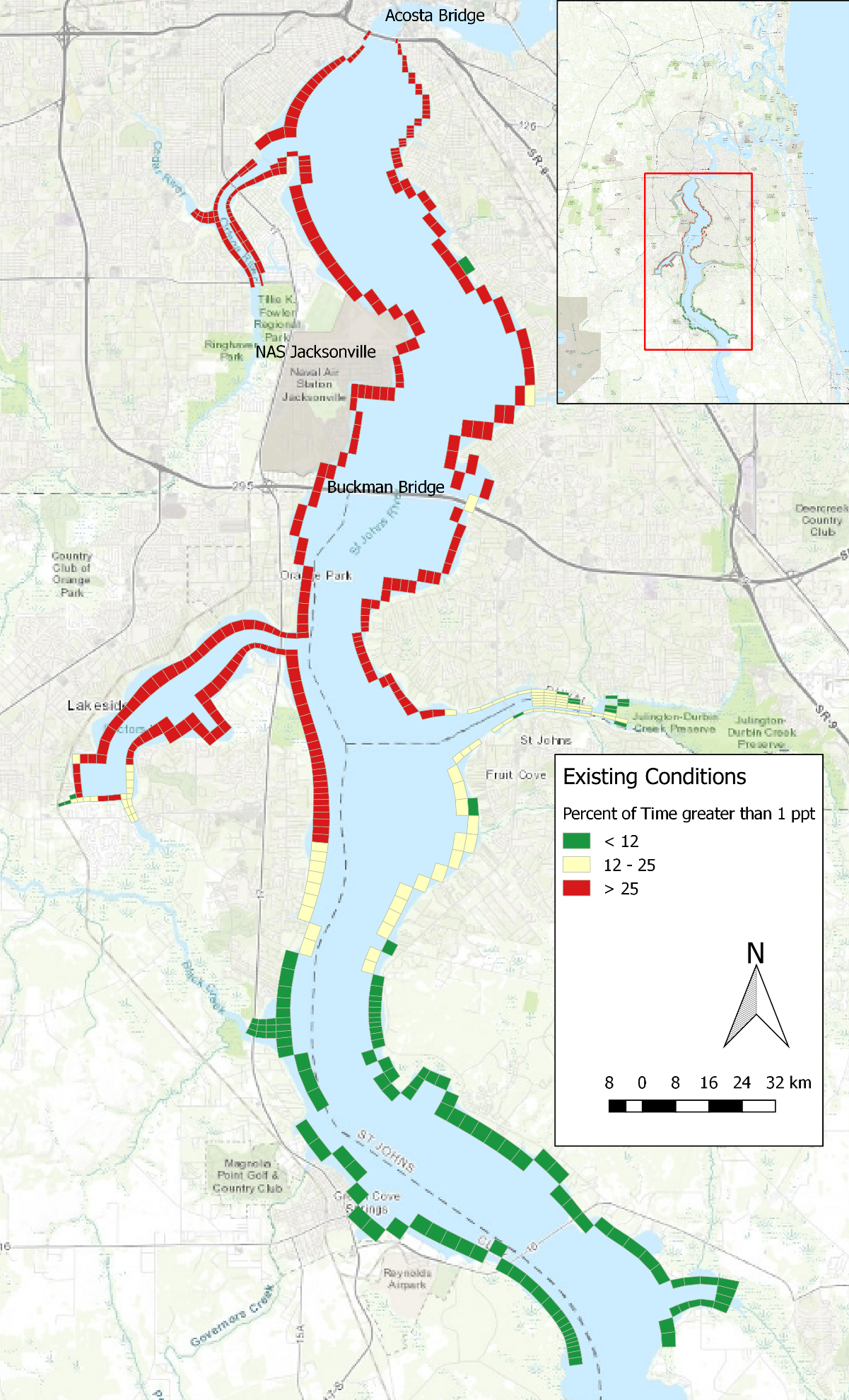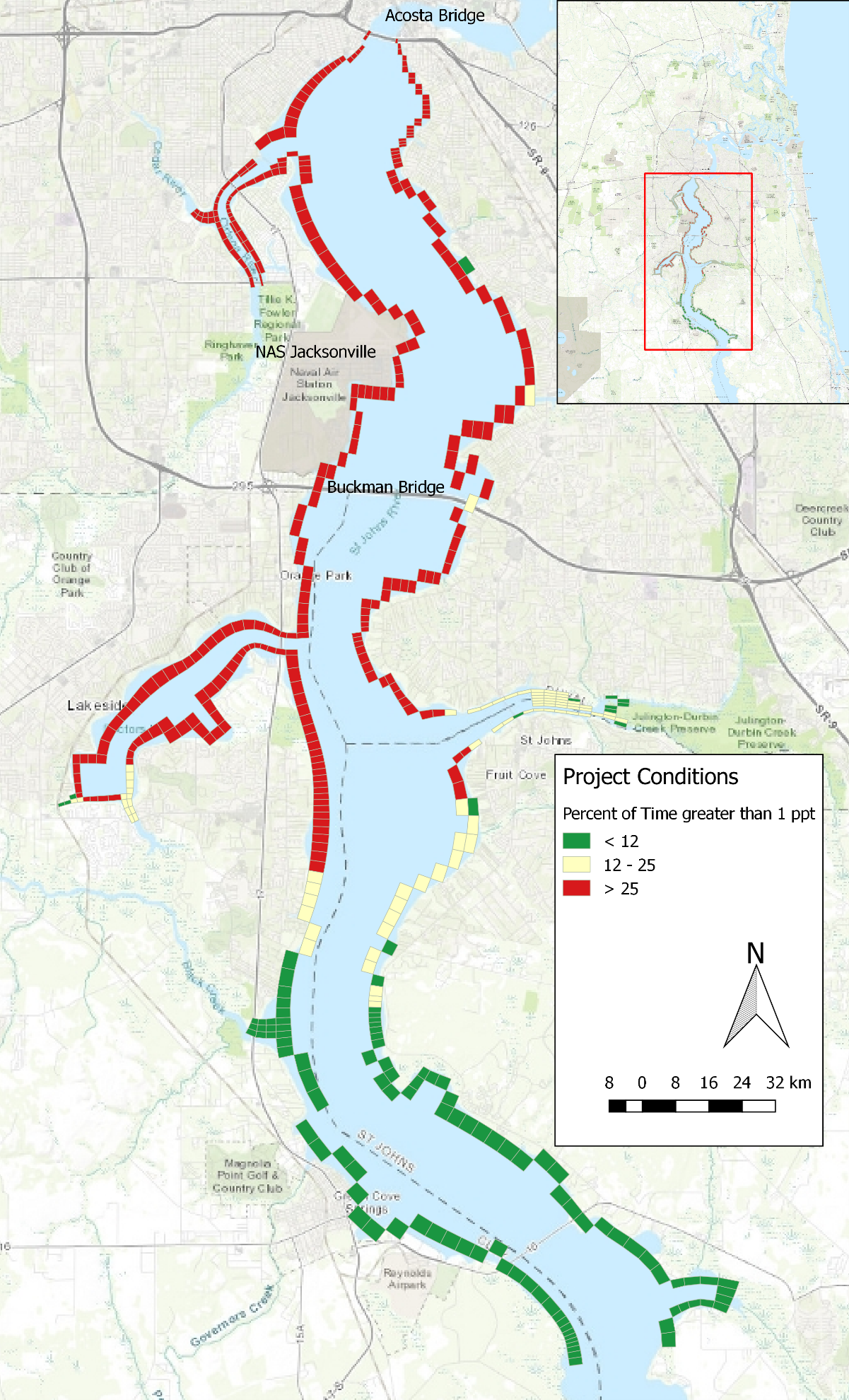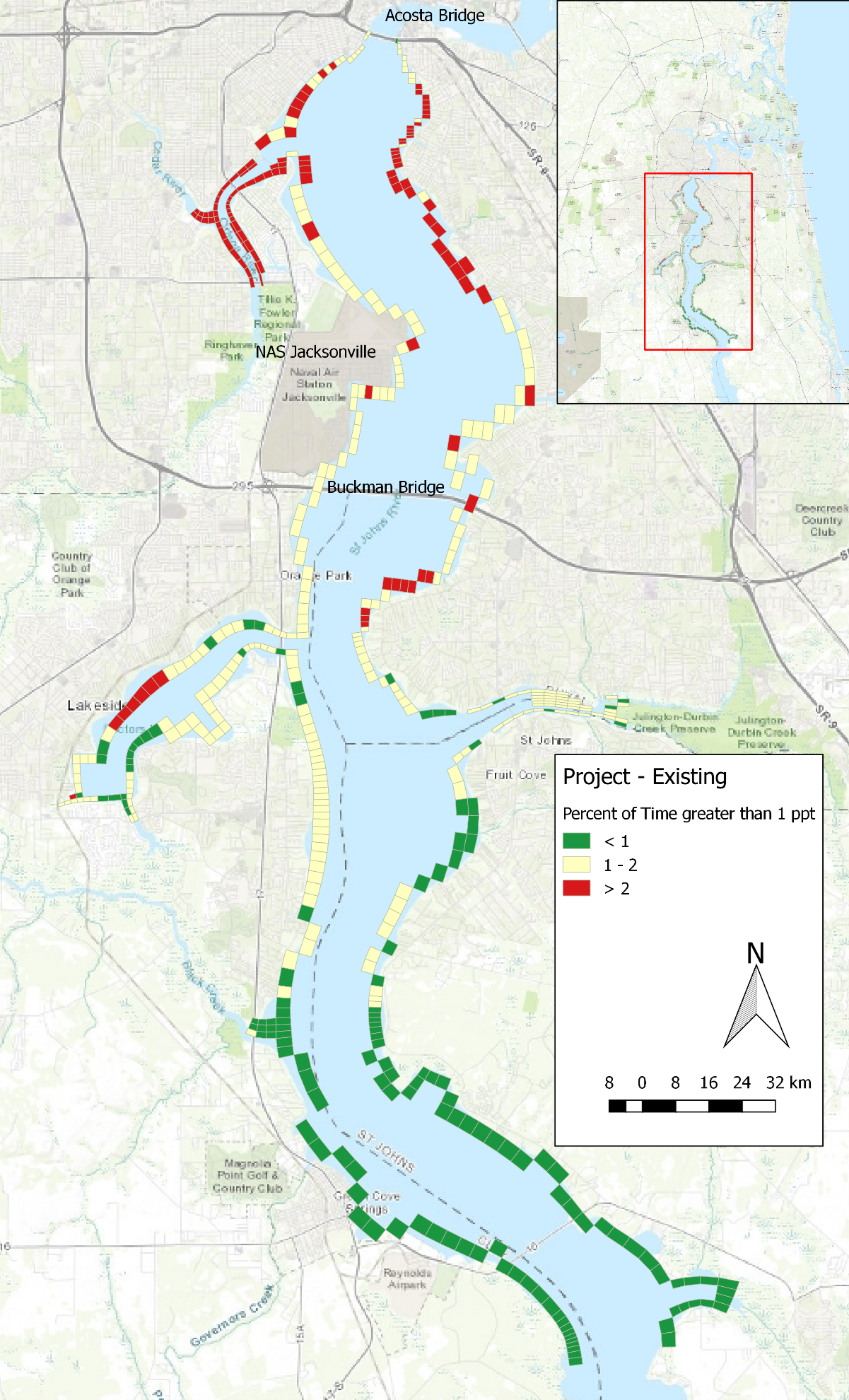
The Saint John River, a vital waterway supporting a diverse ecosystem, is experiencing rising salinity levels due to various factors. This issue is particularly evident in the Lower Saint John River (LSJR) estuary, where channel modifications, water supply withdrawals, and climate variability have compounded the problem. Understanding and addressing these impacts is crucial for preserving the river’s health and the well-being of the surrounding communities and ecosystems.
Recent studies, including those conducted as part of the Jacksonville Harbor Navigation Project, have identified increasing salinity levels in the LSJR estuary as a potential impact of channel modification. The deepening and widening activities of the Jacksonville Harbor could potentially expose the upstream freshwater estuary to higher salinity levels, affecting both the main stem and the tributaries of the river.
Some of the negative impacts that have been identified with rising salinity levels include risks to:
DSI undertook studies to analyze a range of future scenarios and potential mitigation approaches to the rising salinity levels. Some of the results can be seen in the figures below. Figure 1 illustrates the statistical distribution of simulated and observed salinity values along the thalweg of the LSJR. This figure highlights the increase in salinity due to project conditions.
The SAV stress levels as a function of salinity for various running averages are shown in Figure 2. This figure helps to see the impact of salinity on aquatic vegetation.
Figures 3 and 4 present data on the percent of time that salinity exceeds 1 ppt under existing and project conditions. The differences between these conditions for wetland shoreline cells are shown in Figure 5.





The findings from these studies have been integral to the Jacksonville Harbor Navigation Project. The comprehensive hydrodynamic and salinity modeling efforts have provided a detailed understanding of the impacts of the channel modifications, supporting decision-making processes for mitigation and environmental management.
Addressing the salinity issues in the Saint John River is crucial for environmental preservation and community well-being. By mitigating the impacts of increased salinity, we can ensure the river’s health, safeguard water quality, and support the local economy.
Our firm specializes in advanced hydrodynamic modeling, environmental impact assessments, and sustainable management practices. You can contribute to effective solutions that balance economic development with environmental stewardship by partnering with us.
Contact us today to learn more about our services and how we can help you responsibly manage waterways and positively impact surrounding communities. Together, we can ensure a healthy, sustainable future for this vital waterway. Reach out to our expert team for comprehensive insights and tailored solutions. Let’s work together to preserve this essential resource for future generations.